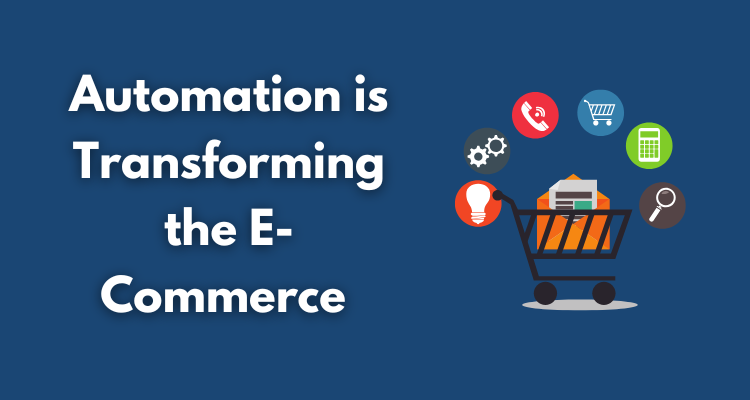Shopping online today feels faster than we’ve ever seen. Consumers expect instant gratification, delivery within hours, and totally smooth transactions. In a market this competitive, the entire customer experience is the most important factor in gaining attention.
Automation is what makes this whole modern shopping thing work. It silently changes how we buy and how companies deliver value, from looking at a product to tracking its delivery.
Behind the scenes, every interaction runs on smart tech that learns fast and adapts instantly. It acts well before the customer even hits “enter.”
Table of Contents
ToggleThe Rise of Automation in the Customer Journey
Managing an online store used to take forever. Now, automation tools handle repetitive tasks. Stores use software that tracks shopper behavior.
They build systems that adjust prices and rely on shipping tools to keep orders moving. These automation tools save time and reduce mistakes. They also make shopping easier for everyone.
Take chatbots, for instance. They can manage thousands of questions simultaneously with no slowdown. That significantly reduces wait times and keeps satisfaction high. Automation also helps large e-commerce platforms update their prices instantly.
These immediate changes respond to shifting demand and competitors’ current sales prices. Finally, warehouse automation supports staff by speeding up the shipping process.
Advanced features such as Yanwen Tracking help online buyers follow packages in real time. This behavior boosts trust and satisfaction. Being able to see location updates instantly reassures customers and reduces support requests. This transparency, enabled by automation, makes waiting for delivery less stressful.
Personalization With AI in E-Commerce

Every online store now tries hard to personalize your experience. They use innovative tools to study your purchases and browsing history. Brands utilize this information to understand what customers want and deliver offers that feel relevant.
Automated recommendation systems are the latest leap in AI in e-commerce. They create a more personal experience from discovery to purchase. Returning shoppers see items they are likely to buy based on preferences. This keeps engagement high and reduces abandoned carts.
Stores aren’t handwriting every marketing email. They use smart tech. These systems shoot out helpful product tips and hot sale alerts to the best customers, skipping the boring mass newsletter. This saves time and makes customers feel more valued.
Automation in Post-Purchase Care
The customer experience does not end at payment. What happens afterward shapes how a shopper remembers the process. Automation helps with post-purchase management through order tracking.
The proactive updates and feedback systems enhance the experience. This quick transparency keeps trust strong. Some companies use automated dashboards to predict delivery times.
Automation also manages returns efficiently. Customers can initiate returns and receive refunds after verification. It happens without waiting for manual review. A smooth process shows customers respect. And… that makes them want to return.
Automation and Customer Trust
Trust is a top priority in online retail. Automation supports it by making each step safe and predictable. Fraud detection tools monitor transactions and spot suspicious activity before customers notice. This builds confidence and protects the brand.
Support bots analyze conversation context to give accurate answers and reduce frustration. Alerts for unusual activity keep processes transparent. Banks and other merchants use verification tools to fight identity theft.
Automation also means customers do not chase updates through emails. They get alerts about shipping, payments, and stock availability. Consistent information across apps and emails creates a reliable experience that encourages repeat purchases.
Omnichannel Journeys Simplified by Automation
Shoppers move freely between devices and channels. They may add a product to a mobile cart, check reviews on social media, and buy on a laptop. Without automation, keeping all channels aligned would be difficult.
Systems now store customer data in one place. They connect preferences, messages, and orders in a single profile so support can see everything at once. When a customer asks about an order, the system shows the history. This stops repeated questions.
Retailers use omnichannel automation to connect marketing and support. Email promotions link to website carts. SMS messages trigger chat help for incomplete orders. This saves time and prevents confusion.
Challenges and Considerations for E-Commerce Automation
Yes, automation has upsides, but it isn’t perfect, either. Data privacy remains a concern. Systems collect information to personalize experiences, so companies must protect it and be clear about its use. In 2025, Gartner reported that 41 percent of consumers feel generative AI overviews make the search process more frustrating.
The loss of personal touch is another risk. Automation is best for routine tasks, but complex emotional issues need human support. Customers notice when replies feel mechanical. Organizations should value both efficiency and human kindness
Costs can be high for smaller retailers. Implementing advanced systems or training models takes time and money. Subscription models and the cloud are democratizing automation for all.
The Future of E-Commerce Customer Journeys
We’re seeing automation branch out from just service and deliveries now. Predictive replenishment systems restock essentials based on purchase history before customers run out. Voice commerce allows orders through smart speakers using natural speech.
Augmented reality tools let buyers see how items look in real environments. IKEA’s app uses image recognition to match furniture and recommend complementary products. These tools reduce returns and improve satisfaction.
The future combines convenience with understanding customer needs. Systems will anticipate mood, intent, and timing. Companies that adopt these practices will meet changing shopper expectations. Automation will evolve from handling tasks to being a dependable digital assistant that enhances the shopping experience.









